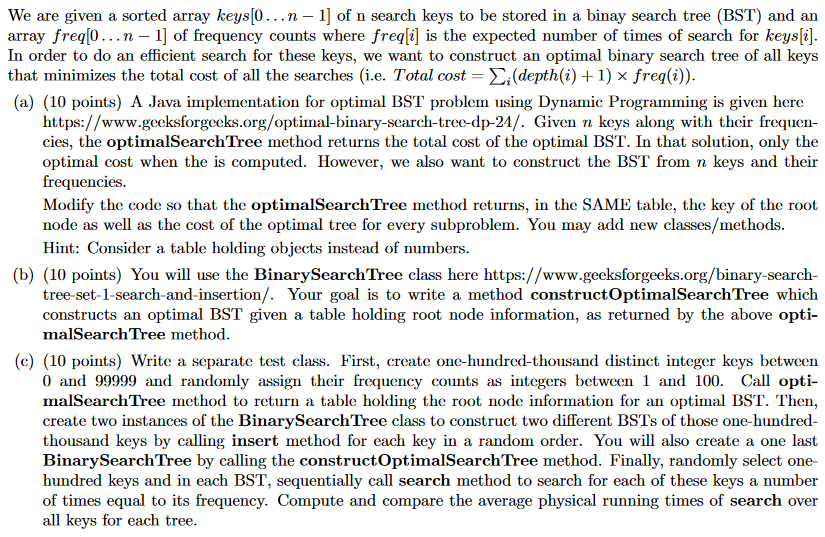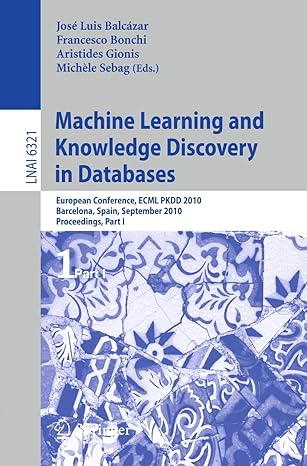
We are given a sorted array keys [0n1] of n search keys to be stored in a binay search tree (BST) and an array freq [0n1] of frequency counts where freq [i] is the expected number of times of search for keys [i]. In order to do an efficient search for these keys, we want to construct an optimal binary search tree of all keys that minimizes the total cost of all the searches (i.e. Total cost =i(depth(i)+1)freq(i)). (a) (10 points) A Java implementation for optimal BST problem using Dynamic Programming is given here https://www.geeksforgeeks.org/optimal-binary-search-tree-dp-24/. Given n keys along with their frequencies, the optimalSearchTree method returns the total cost of the optimal BST. In that solution, only the optimal cost when the is computed. However, we also want to construct the BST from n keys and their frequencies. Modify the code so that the optimalSearchTree method returns, in the SAME table, the key of the root node as well as the cost of the optimal tree for every subproblem. You may add new classes/methods. Hint: Consider a table holding objects instead of numbers. (b) (10 points) You will use the BinarySearchTree class here https://www.geeksforgeeks.org/binary-searchtree-set-1-search-and-insertion/. Your goal is to write a method constructOptimalSearchTree which constructs an optimal BST given a table holding root node information, as returned by the above optimalSearchTree method. (c) (10 points) Write a separate test class. First, create one-hundred-thousand distinct integer keys between 0 and 99999 and randomly assign their frequency counts as integers between 1 and 100 . Call optimalSearchTree method to return a table holding the root node information for an optimal BST. Then, create two instances of the BinarySearchTree class to construct two different BSTs of those one-hundredthousand keys by calling insert method for each key in a random order. You will also create a one last BinarySearchTree by calling the constructOptimalSearchTree method. Finally, randomly select onehundred keys and in each BST, sequentially call search method to search for each of these keys a number of times equal to its frequency. Compute and compare the average physical running times of search over all keys for each tree







